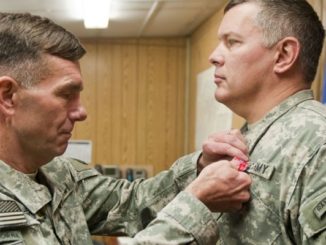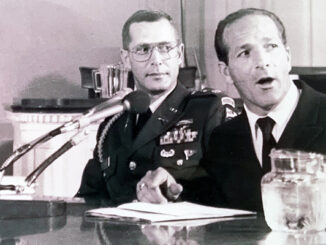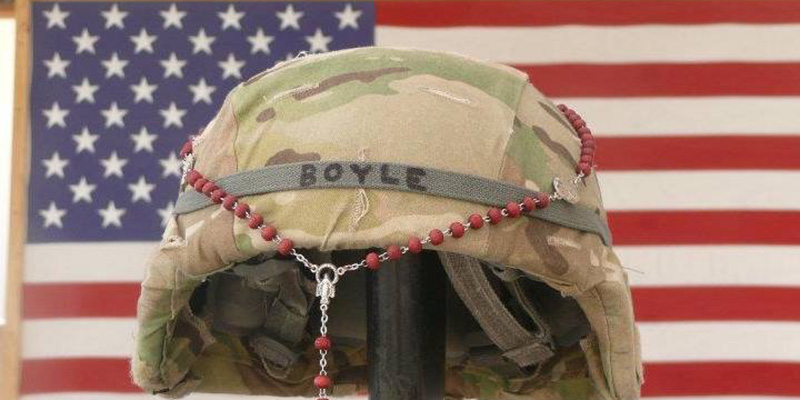
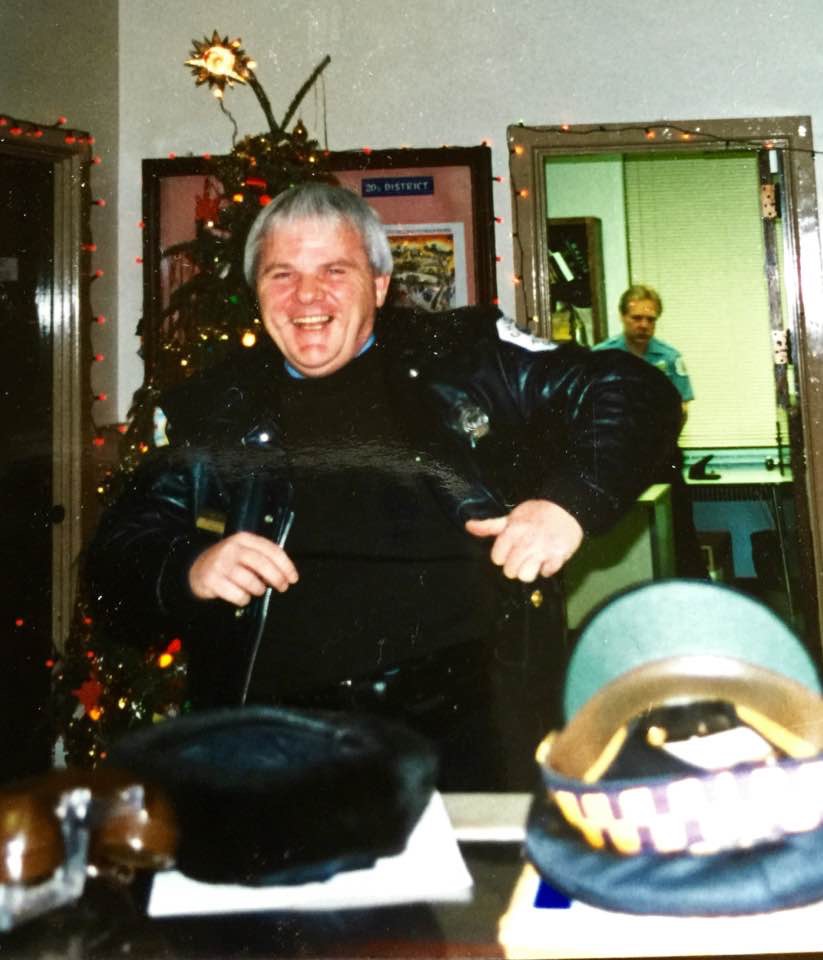
Thomas J. Boyle Jr. spent 30 years of his life as a Chicago police officer. During his police career Tom worked tact and vice (undercover), He was a major part of a successful drug bust – the largest drug bust in the history of Chicago. Boyle knew quite a bit about the drug trade and how it worked on the streets of Chicago.
After retiring from the Chicago Police Department, he received an opportunity to work as a civilian contractor to help train and set up police units throughout the Middle East. Thomas was a former Marine and Vietnam veteran. He knew a few things about staying safe in a combat zone having been there before.
As a military civilian contractor, Thomas worked for MPRI/Engility Corp, a division of L3 Technologies. Tom began these missions after World Trade Center was destroyed on 9.11.2001, as a way to contribute to his country. He possessed a very strong sense of patriotism. Retirement did not suit him well, he was a working man. His decision to head to the Middle East was primarily driven by a strong sense of duty and love of country.
Serving your country and getting paid well was the best of two worlds. A few years in the Middle East doing what he loved to do would also help the Boyle family to rack up some extra retirement money so he and his wife Pauline could do some traveling, or relocate to a warmer climate, away from the bitter cold winters of Chicago.
Ironically, being a civilian contractor in the Middle East may have possibly been safer employment than a Chicago cop. The murder rate in Chicago is sometimes higher than on the meanest streets in the Middle East. Furthermore, because of the abysmal financial situation in Chicago where the city is having difficulty in covering pensions for city employees, taking this opportunity in the Middle East seemed to be a very smart move.
On June 19, 2012, Thomas Boyle found himself at the Joint Base Provincial Reserve in Kandahar, Afghanistan, attached to the Army’s 303rd 8-1 CAV from Jackson, Michigan. Thomas was activated with twenty-five other reservists, and since he was one of the few civilian contractors, it’s likely that every man in the unit was on a first name basis with him.
THE ATTACK
Just after 5 am, a truck came into the Afghani side of the compound with four insurgents dressed as Afghani police officers. The four insurgents began to toss grenades. They tossed a grenade into the quarters of Capt. Kuduz and killed him. Kuduz was commander training of the Afghan National Police (ANP). He was to take command of four ANP substations as they were about to be consolidated. LTC McKinley was providing ‘training and oversight’ supposedly not in command of any ANP police command.
The driver of the truck (Haji Bismullah) was a former Gitmo detainee released by the Bush Administration who went back into the fight to kill more Americans. The driver dropped off the four insurgents dressed as Afghani policemen and introduced them as “new recruits.” After departing the truck, the insurgents split up into groups of two and casually began to walk through the compound getting ready to initiate their murderous rampage.
Thomas Boyle was standing with the commanding officer of the unit, LTC Matt McKinley, when he heard grenades and realized the gun shots coming their way. It’s believed that Boyle pushed McKinley into safety when he was cut down in a hail of bullets, by the so-called Afghan police recruits. Forensic crime scene analysis, independent autopsy results and several medical opinions revealed severe conflicts between what actually happened and the reports produced by the Army’s Criminal Investigative Division (CID). Thomas Boyle probably wasn’t killed by the insurgents at all, but rather by Army soldiers who were waiting for the opportunity to kill Thomas Boyle.
After the smoke cleared, the United States Army had difficulty getting their story straight, because there were three different death certificates with three different causes of death. His wife Pauline was told that her husband was killed by a suicide-vest detonation, but the facts don’t bear that out. When Mrs. Boyle had her husband’s body exhumed they found 11-13 bullet holes and no physical evidence he died from the blast of a suicide-vest. It’s all been just one big pack of lies from the military ever since.
Forensic experts questioned the lack of blood surrounding a body that was covered in blood. This suggested the body of Thomas Boyle had been moved, then staged. Everyone in the Boyle family wondered why a soldier was smiling in a photo next to the body of Thomas Boyle. The interpreter (Farhad) was killed in his tent. Curiously, none of the insurgents were ever in this location. One individual who was not on the base at the time of the attack said, “The local commander covered it up to save his career and high ranking officers knew it to be a lie.”
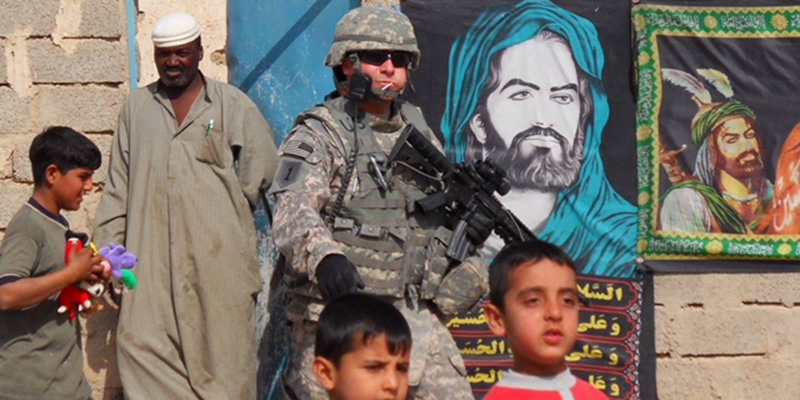
THE UNITED STATES ARMY AND INSURANCE COMPANIES TEAM UP
TO DEPRIVE THE VICTIM’S FAMILY OF DEATH BENEFITS
To make matters worse, the insurance companies piled on by looking for any possible way to avoid paying out a claim to the deceased’s widow. Both Aetna and Metlife insurance companies refer to “accidental bodily injury” or “accidental homicide” in the file notes which were kept hidden from Mrs. Pauline Boyle.
Accidental death insurance benefits where denied to the Boyle family. The “Defense Base Act” (DBA) is a system of federal workers’compensation applied to United States contractors working abroad on U.S. bases or pursuant to an U.S. contract. When these contractors sustain a work-related injury, they are entitled to benefits. In some cases, the event that caused the contractor’s injury qualifies as a “war-risk hazard.”
Generally, “war-risk hazards” include the discharge of weapons; any action by a hostile force or person, including insurrection or rebellion; the discharge of munitions intended for use in war; the collision of vessels and aircraft operating without customer navigation aids; and the operation of a vessel or aircraft in a zone of hostility or engaged in war activities.
The benefits paid to a DBA claimant because of injuries caused by a “war-risk hazard” qualifies the employer, insurance carrier, or compensation fund that paid any benefits to reimbursement under the War Hazards Compensation Act (WHCA). Under the War Hazards Act, the insurance companies would be reimbursed all compensation paid to the widow if Mr. Boyle’s death was classified as a war-risk hazard.
The INCIDENT SUMMARY of the War Hazards Act application stated: “06/19/2012: Four assailants in Afghan police uniforms attacked a police base in Zara Bazaar, Kandahar City, Kandahar Province, Afghanistan. Seven people were killed, including three police officers and the four attackers, and another six police officers were injured in the clash. The Taliban claimed responsibility for the incident.” For some reason Tom Boyle’s death was not mentioned.
Aetna Insurance Company ruled that at the time of Boyle’s death, the act-of-war limitation did not apply and his death was a result of accidental bodily injury, if you can believe that shit. It begs the question. Since Boyle was not armed at the time, how in the world did Thomas Boyle “accidentally” shoot himself 13 times?
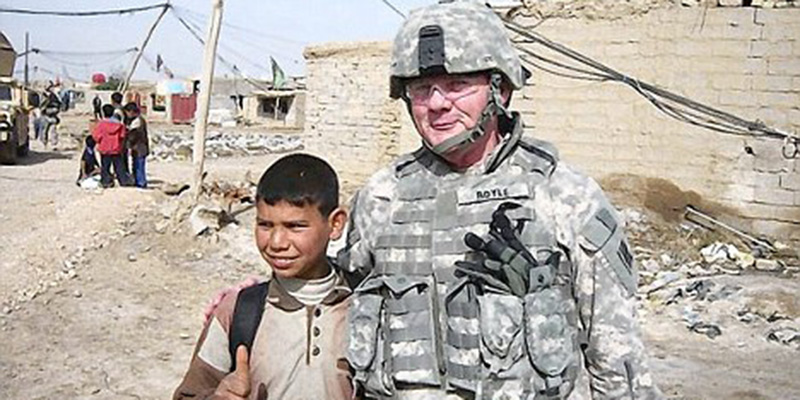
THEORY OF WHAT REALLY HAPPENED
The major cash crop of Afghanistan is drugs. There’s really very little else that produces as much money in Afghanistan as the drug business. Drugs have a way of corrupting virtually everyone that comes in contact with it. It’s not out of the realm of possibility that some of the American soldiers on the base, and a large percentage of the Afghans are supplementing their income from the lucrative drug trade.
Those that resist the corrupting influence of the drug trade become marked men. Thomas Boyle was very much cut from the same mold as Frank Serpico and probably made it clear to everyone, they needed to keep that crap far away from him, he wanted nothing to do with it.
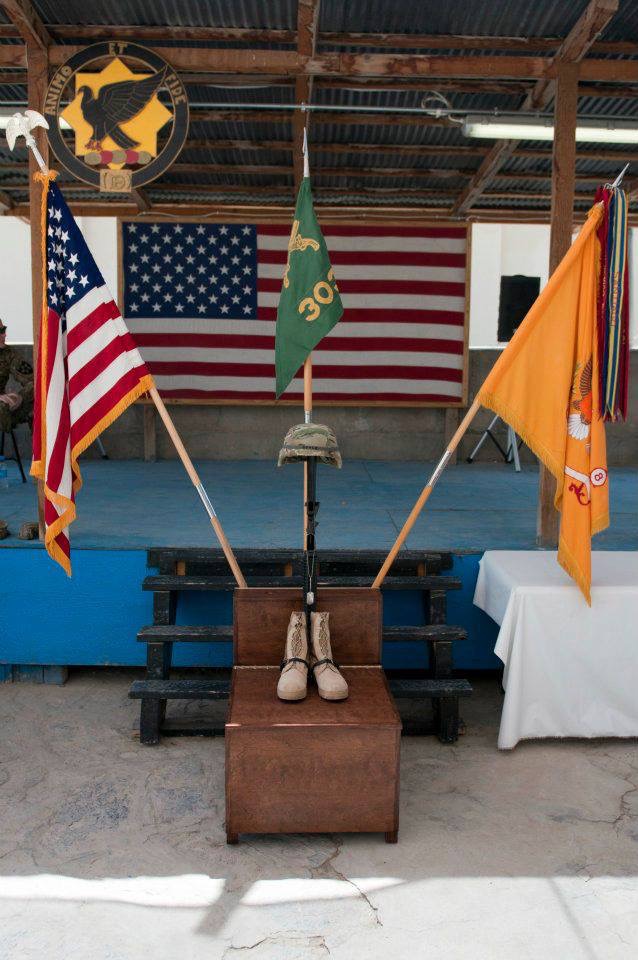
On the very day of the raid, there was to be a change of command which probably made the drug people very nervous. Captain Kuduz was to relieve Lieutenant Colonel McKinley. The military drug cartel may have felt they had to do away with the new commanding officer and the civilian contractor (Thomas Boyle) to make sure the river of drugs and money kept flowing.
The insurgent raid on the compound was possibly a set-up designed to partially be a distraction. Everyone had their assignment. The insurgents were to kill Capt. Kuduz who was to take command that very day, while American soldiers zeroed in on the Afghan interpreter and civilian contractor Thomas Boyle. They were after those three primarily, and anyone else that posed a potential threat to a flourishing military organized crime unit.
The objective was to protect the Lieutenant Colonel McKinley and keep him as commanding officer, while getting rid of those who were not corruptible. The evildoers very well knew that as a seasoned police officer from Chicago, Boyle would have quickly deduced the killing of Captain Kuduz was premeditated murder with malice aforethought. They could not take that chance of having their crimes exposed.
After all the burial ceremony and military representatives left town, Thomas Boyle’s wife Pauline had her husband’s body exhumed and forensically examined. They discovered the wounds were entrance bullet wounds and very few exit wounds yet there were no bullets in his body.
Strangely, the bullet holes had been sewn shut. When military and civilian representatives came to her home to sell her on their version of what happened, Pauline Boyle knew in an instant they were lying to her from their body language and eye-contact.
The military held Thomas Boyle’s body at Dover AFB for nearly two weeks. It’s the widow’s belief the clandestine alterations to her husband’s body were being administered during this unusual delay at Dover AFB before releasing Boyle’s body to his relatives. The delay in releasing his body gave the military time to remove bullet fragments and conceal the fact that Thomas Boyle died from American made bullets.
The exhumation autopsy also revealed another surprising fact, that Boyle suffered a serious blunt force trauma to his head while he was still alive. This could mean that after he had been shot multiple times, the bad guys were surprise to see he was still breathing and used some object to end his life with a killing blow to the head.
Obviously, suspicions are not proof of wrong doing, but Pauline Boyle has discovered enough evidence to warrant an all-out independent investigation. The problem is that asking the Army to investigate itself is asking the Fox to guard the hen house. The result will always be questionable. The Boyle family does have hard facts that clearly indicates there was an overt attempt to cover-up the circumstances of Thomas J. Boyle’s death.
Was there a military drug cartel that no one wanted to talk about, or was it a conspiracy of some of the soldiers on base to stop the change of command and keep the lieutenant colonel in command for as long as possible.
While they were killing the new commanding officer (Kuduz), they took advantage of the so-called insurgent attack to kill Thomas Boyle and the Afghan interpreter as well. The motive for Boyle’s death is not clear, but it’s clear that his body with 11-13 bullet holes from two different shooters was not an accident. And the secret removal of bullet fragments from his body was no accident either. The United States Army appeared to be in full cover-up mode. Past experience tells us that when the military goes to these lengths to cover-up criminal activity, there is a flag-ranking officer involved.
Not only was the United States Army in a major cover-up mode, but the United States Air Force also clammed up. Mrs. Pauline Boyle asked the Air Force for records related to her husband’s body and they also refused to provide her any information. Mrs. Boyle received absolutely no help from her Congressional representative. When she sought help from her Congressman, he first wanted to know what information that she possessed before he would help her out.
When the congressman’s office demanded to know what she knew, that raised a red flag with Mrs. Boyle. She knew she would never receive any help from Congress because they really don’t want to be responsible for major headlines exposing a drug ring in the Army. Even members of congress don’t want to become a whistle-blower unless it puts money in their pockets.
Aiding and abetting murderers makes the United States Army an accessory to murder, after the fact, by effecting a cover-up of those murders. There are people out there right now that know all about this case. They need to come forward and do the right thing. If you are one of those people, you know how to reach us.
For those murder mystery buffs and those who believe that knowledge is power, here are a series of YouTube videos on the death of Thomas J. Boyle Jr.

